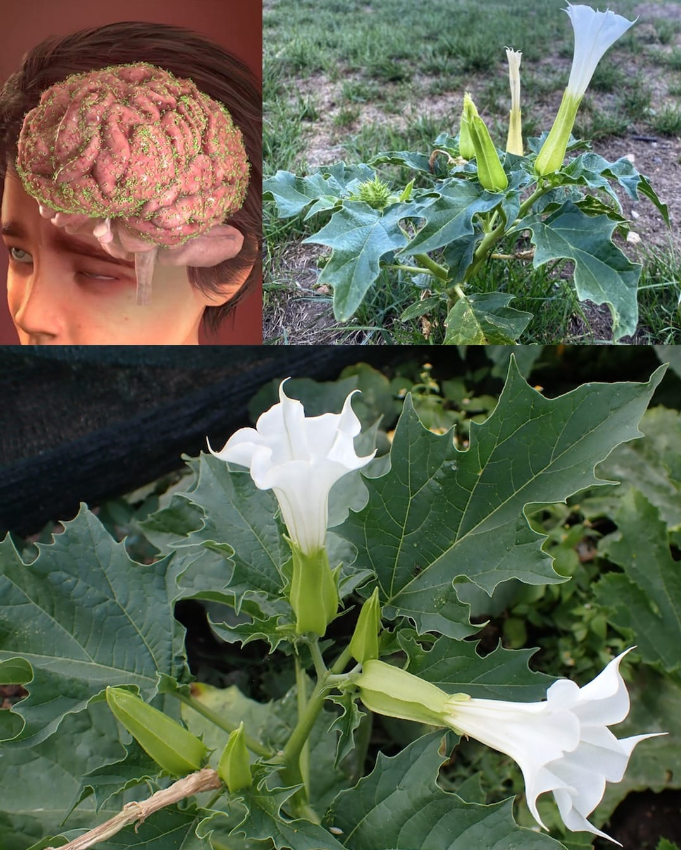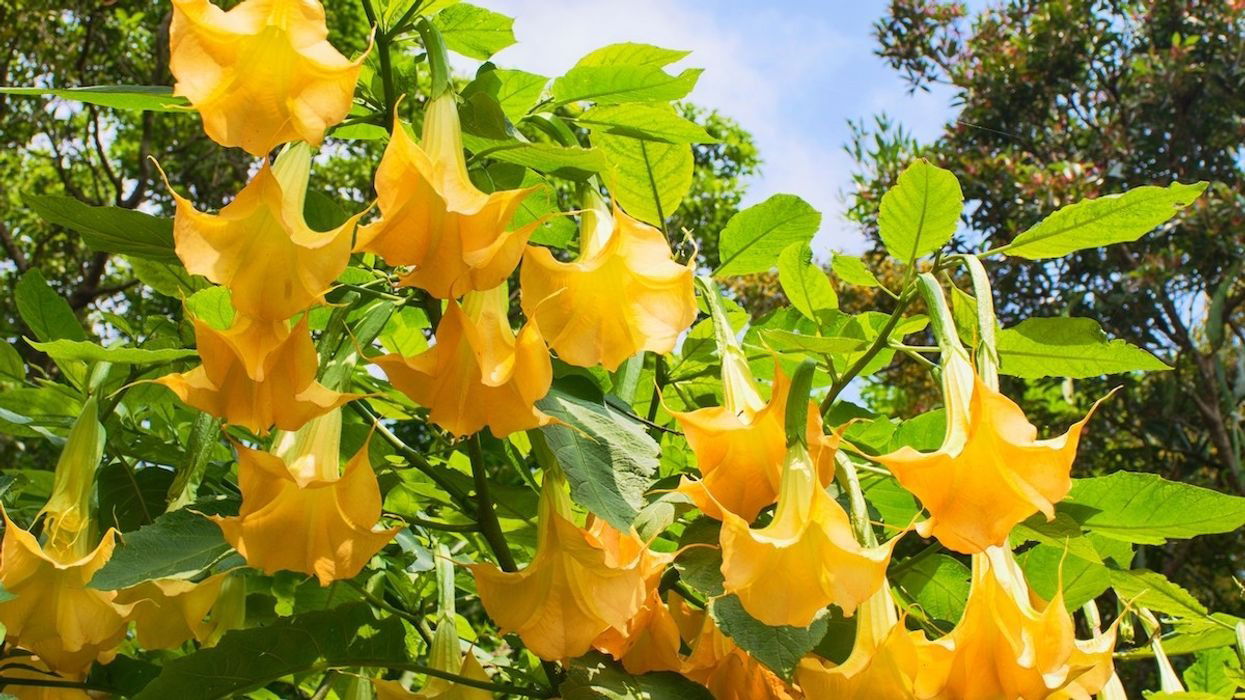
The Datura genus, often known as Devil’s Trumpet or Thorn Apple, is both dangerous and visually beautiful. These plants are very appealing with their dramatic trumpet-shaped blooms and spiny seed pods, but their toxicity endangers both humans and animals. Here’s everything you need to know about the hazards of Datura and why you should avoid them at all costs.
What Is Datura?
Datura belongs to the nightshade family Solanaceae, which originated in the Americas. It has now spread globally, flourishing in disturbed soils, roadsides, and gardens. While some grow Datura for its beauty value, its high toxicity makes it a risky choice.
Every part of the Datura plant is poisonous, including its huge, funnel-shaped blooms in white, purple, or yellow, as well as its unique spiny seed pods.
Common Datura Species
1. Datura stramonium (Jimsonweed or Thorn Apple):
This plant, which has white or purple trumpet blooms and spiky seed pods, is well-known for its psychedelic qualities, yet even tiny doses can cause serious toxicity.
2. Datura metel (Horn of Plenty):
This species is valued for its decorative splendor, with big flowers in brilliant shades of white, yellow, and purple. It has traditionally been utilized in Ayurvedic treatment and poses the same hazardous dangers as other members of the genus.
3. Datura inoxia (Moonflower):
With fragrant, white, night-blooming blossoms, this species is frequently confused for the harmless Moonflower vine, resulting in accidental poisoning. Its seeds and blooms are very rich in poisonous alkaloids.
4. Datura ferox (Long-spined Thorn Apple):
This species, distinguished by its tall, spiny seed pods, contains one of the greatest quantities of poisonous chemicals, making it particularly hazardous.

Why Is Datura So Dangerous?
Datura includes strong tropane alkaloids such as atropine, scopolamine, and hyoscyamine, which disrupt the central nervous system. These substances elicit severe symptoms and can be lethal in small doses.
Symptoms of Datura Poisoning
Hallucinations and Delirium: Victims frequently encounter vivid and frightening visions.
Dilated Pupils and Blurred Vision: Light sensitivity and poor eyesight are typical.
Dry Mouth and Difficulty Swallowing: Classic symptoms of atropine overdose.
Increased Heart Rate and Blood Pressure: These effects can lead to cardiovascular problems.
Seizures and Coma: In severe circumstances, poisoning can cause respiratory failure, coma, and d.e.a.t.h.
How to Stay Safe
1. Avoid Handling Datura:
Toxic substances can be absorbed through the skin, so do not contact these plants.
2. Keep Away from Children and Pets:
The plant’s colorful blossoms and seed pods may pique interest, but they are dangerous.
3. Wear Protective Gear:
If you need to remove Datura from your property, always wear gloves and protective gear.
4. Educate and Spread Awareness:
Share information about Datura’s toxicity to avoid accidental touch or intake.

Final Thoughts
While Datura’s exotic beauty may entice gardeners or passers-by, the risks far exceed the aesthetic pleasure. Every element of the plant is a potential threat, with unpredictable and maybe lethal consequences. If you see Datura, admire it from a distance but leave it alone.

















